Ulm is a charming city located on the banks of the Danube, which makes it a popular destination for tourists wanting to explore the southern part of Germany. One of Ulm’s most impressive monuments is the Gothic Cathedral, which is famous for having the tallest tower in the world and is home to a beautiful astronomical clock.
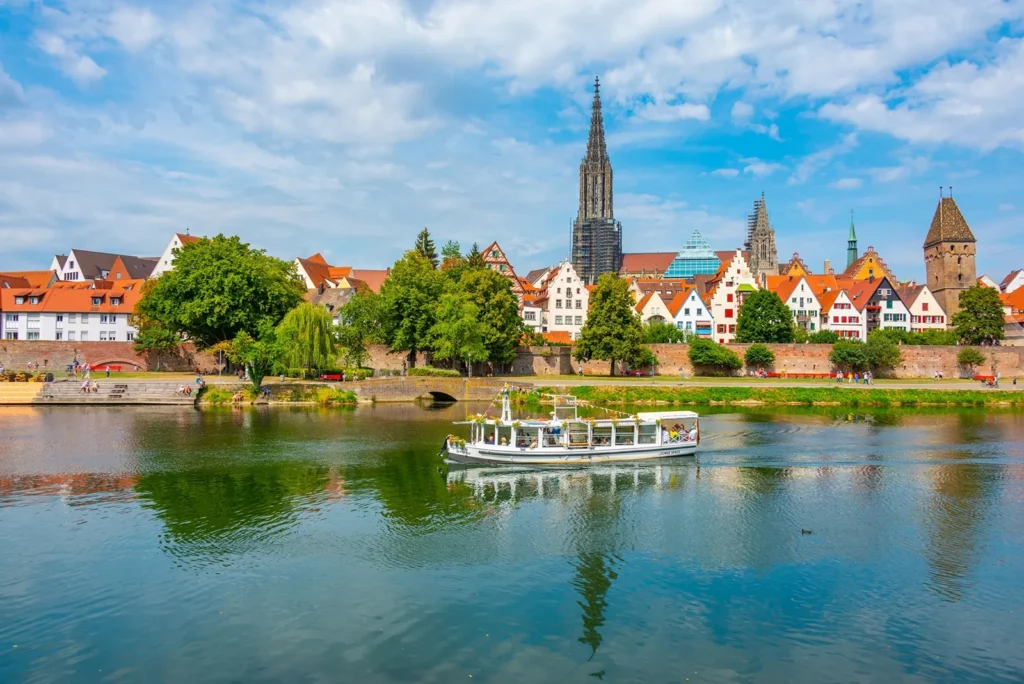
The Ulm Museum is worth visiting, presenting the rich history of the city and region, as well as exhibits from prehistory to contemporary art. Another historic site worth visiting is the Fishermen’s Quarter, where you can admire well-preserved medieval buildings and cobblestone streets.
Ulm is also famous for its rich cultural scene, hosting numerous festivals and events throughout the year, including the famous Danube Festival, which offers live concerts, food stalls and fireworks displays. The city is also home to several theaters and art galleries.
Blautopf
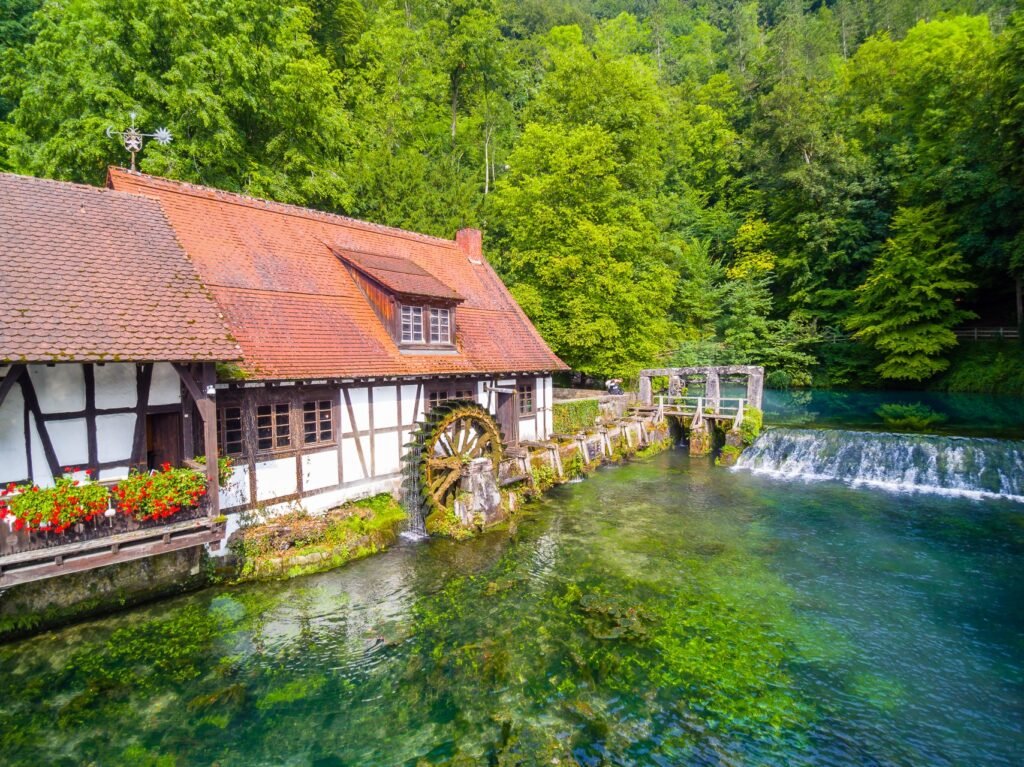
Blaubeuren with Blautopf is located 20 km west of Ulm. Its blue and green colors make it a unique place. In fact, Blautopf is a karst spring and the associated branching cave system has not yet been fully explored.
In Blautopf you can also visit the traditional hammer forge in Blautopfhaus. The offer also includes blacksmithing courses. There are several hiking trails around Blautopf from which you can admire wonderful views, castle ruins or rock mazes.
Ulm Cathedral (Ulm Minsterit)
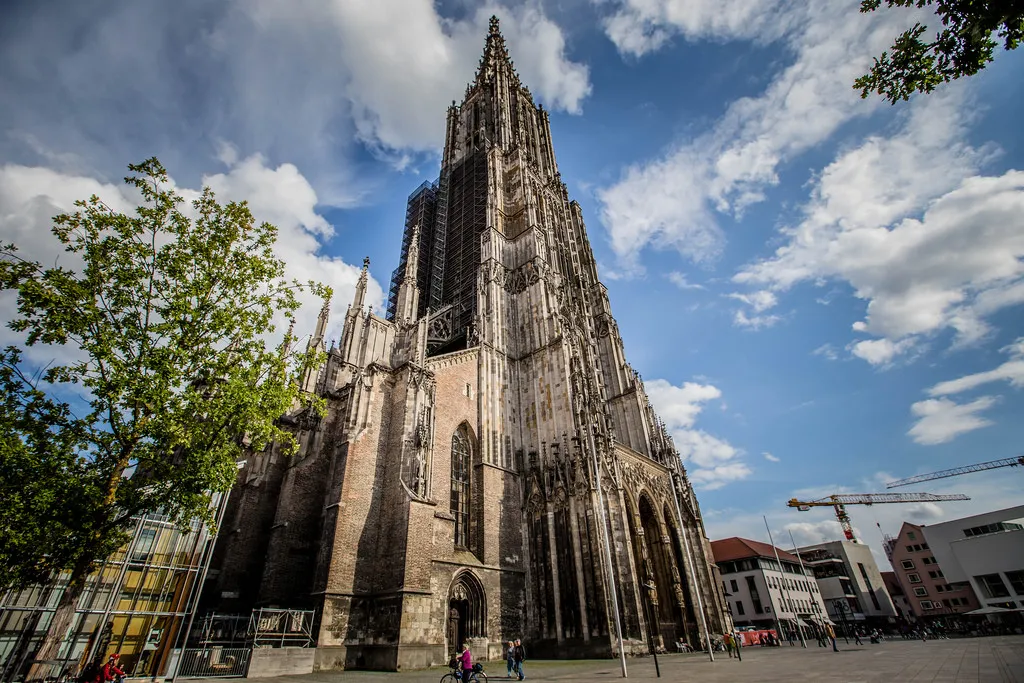
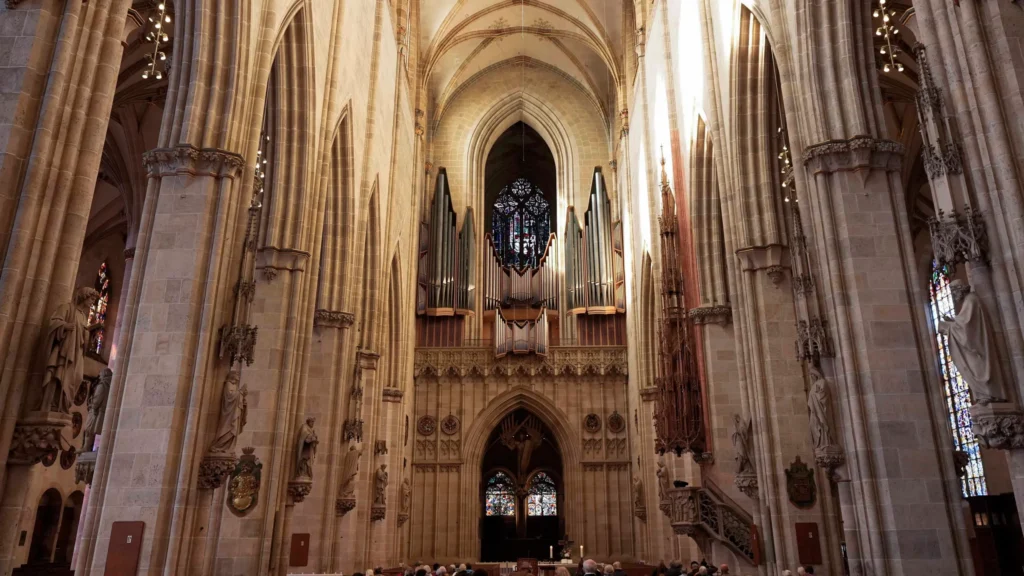
Ulm Minsterit built before the 20th century, with a steeple measuring 161.5 metres (530 ft).Though the towers and all decorative elements are of stone masonry, attracting the attention of visitors, most of the walls, including the façades of the nave and choir, actually consist of visible brick.
The ornamental astronomical clock was installed around 1520. The lavish exterior murals were extended to the older part of the building and didactically illustrate virtues and commandments.
Wiblingen Abbey

Wiblingen Abbey was a former Benedictine abbey which was later used as barracks. The Baroque buildin today is part of the museum (Museum im Konventbau) and stresses the life of monchs and secular interests. The museum pays special attention to Baroque ecclesiastical architecture. And in the buildings house several departments of the medical faculty of the University of Ulm.
Ulm Rathaus And Marktplatz
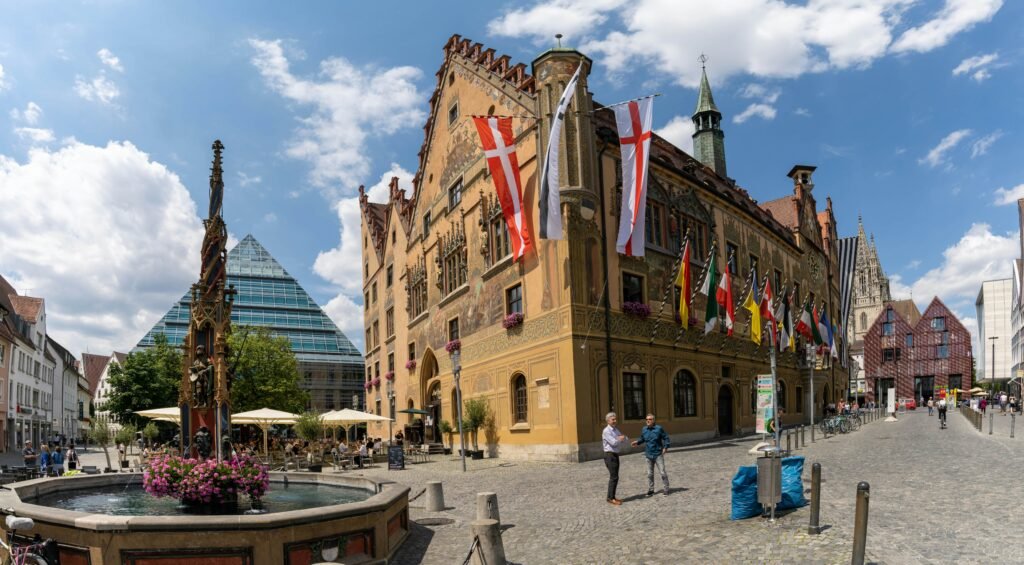
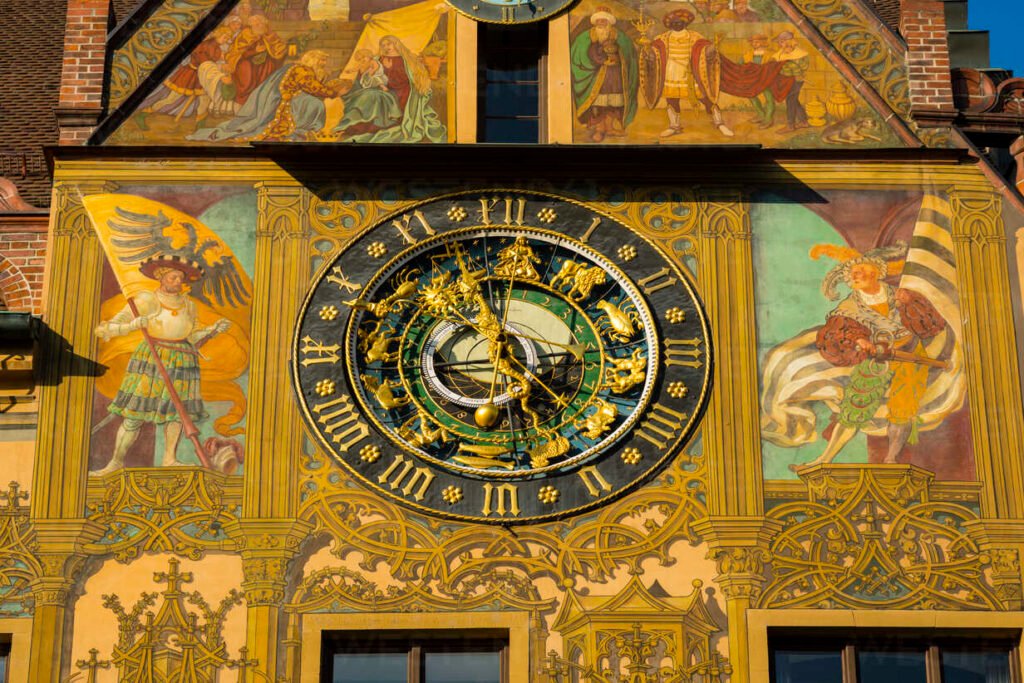
Ulm town hall is situated not far from the Minster and is easily recognised by its opulently painted, early renaissance façade. The oldest part of the present building, the main South East building, was built in 1370 as a “new trading house”. It was first mentioned as a town hall in 1419.
The ornamental astronomical clock was installed around 1520. The lavish exterior murals were extended to the older part of the building and didactically illustrate virtues, commandments and vices. The paintings visible today originate from the year 1900 when the previous paintings, which had been largely destroyed by the weather, were restored or renewed in the sprit of the surviving remains.
Fischerviertel Ulm (Fishermen’s Quarter)
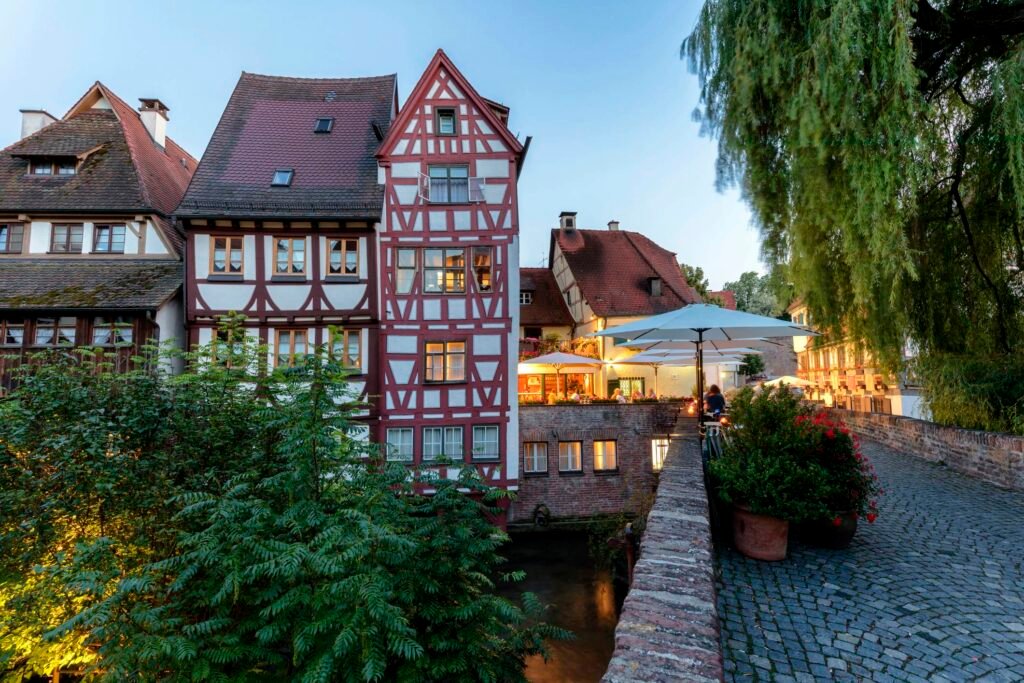

In Ulm’s Fishermen’s Quarter, the historic artisan street where half-timbered houses and water-mill wheels huddle by the water’s edge alongside bijous galleries and courtyard restaurants. Crooked, tilted, and hunched, these restored buildings once belonged to Ulm’s fishermen, shipbuilders, and tanners. Today, their charm draws photographers, painters, and those who enjoy a pretty place.
Freunde des Ulmer Museums e.V.
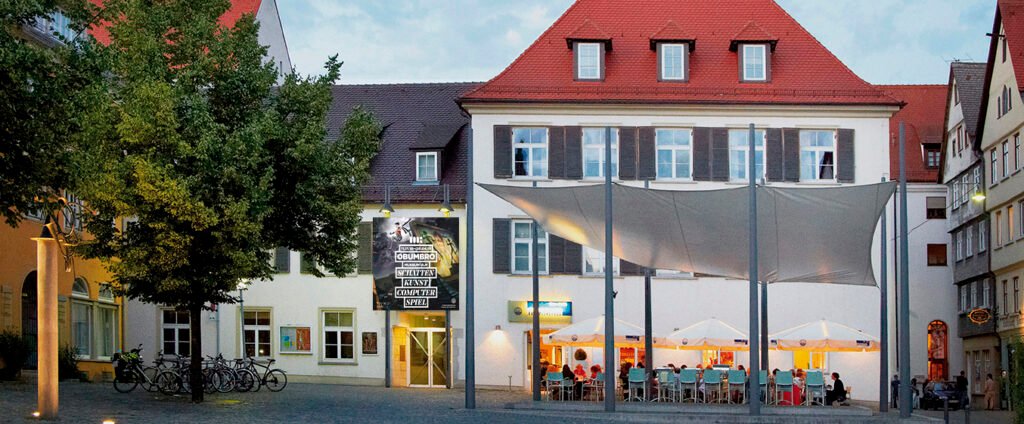

The friends’ association ‘Verein Freunde des Ulmer Museums e.V.’ provides non-material and financial support to the museum, supporting its scientific work. The association’s purpose is to support the museum through purchases for the collection, marketing, representation of the museum’s interests, support of its exhibitions and other events, as well as through deepening the knowledge in all fields of the fine arts.
Museum Brot und Kunst – Forum Welternährung
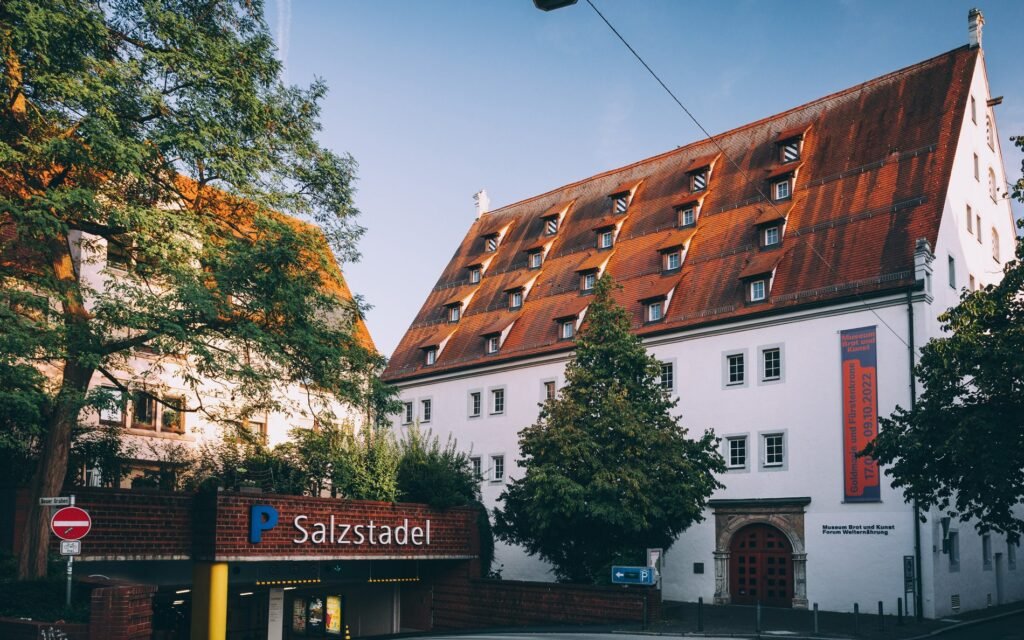

Museum Bread and Art – World Food Forum offers a captivating journey through the multifaceted world of bread, art, and culture. This privately run museum spans three floors, each thoughtfully curated to illuminate the historical significance of bread across civilizations.
Visitors can explore interactive exhibits that engage all ages, making it an ideal destination for families. The museum features a diverse range of displays, showcasing the intertwining of bread with religion, art, science, and commerce, providing a well-rounded educational experience.
Fortress of Ulm
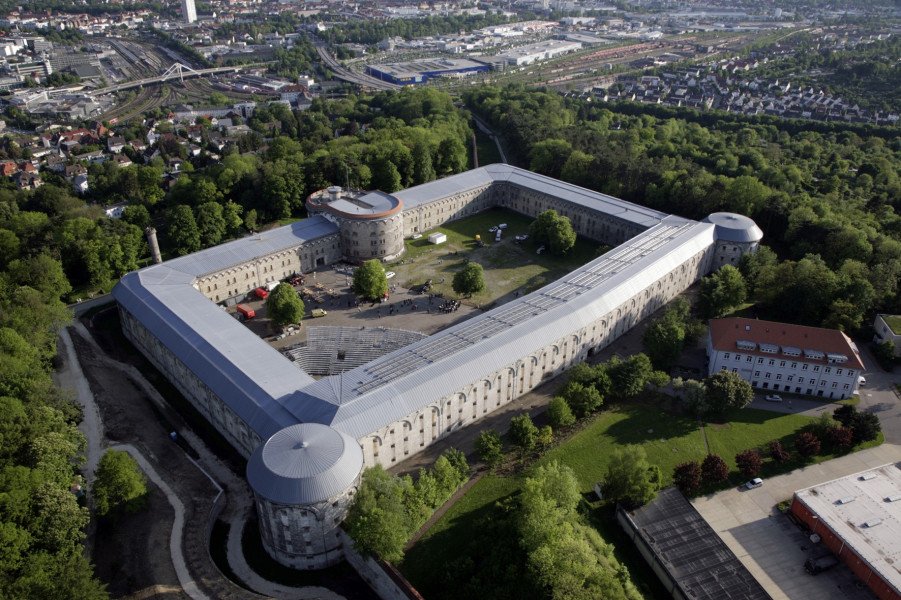

The federal fortress Ulm was built in the middle of the 19th century and consisted of various installations, some of which can still be seen today. The 12.5-kilometre-long fortress path leads along the main embankment past the surviving buildings and provides information on their origin and function on numerous panels.
Tiergarten Ulm


You can see it in the Ulm Aquarium a variety of tetras, barbels and cichlids, which also include mussels and discus fish, come from tropical rivers and lakes. The offspring of lower animals and sea anemones are bred in the seawater section. In total, you can admire the inhabitants of about 50 swimming pools.
Amphibians include: represented by tree frogs and leaf-climbing frogs. Crocodiles in glass pond enclosures are particularly impressive when it comes to reptiles. Parrots, northern ibises and flying aviary ibises, as well as various ornamental birds represent the world of birds.
